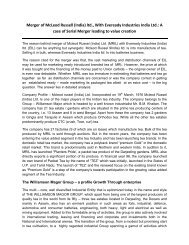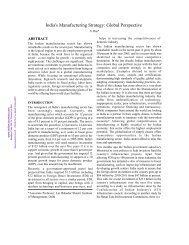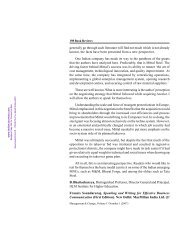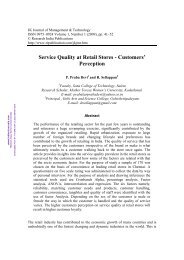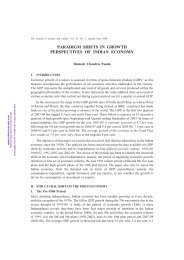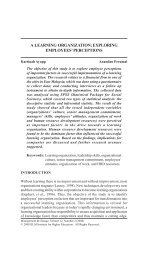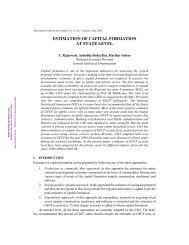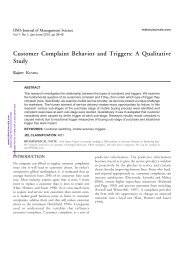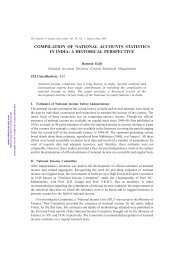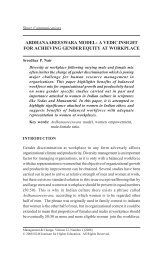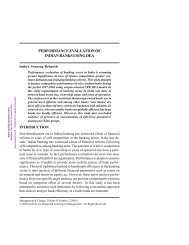Cultural Globalisation - Mimts.org
Cultural Globalisation - Mimts.org
Cultural Globalisation - Mimts.org
You also want an ePaper? Increase the reach of your titles
YUMPU automatically turns print PDFs into web optimized ePapers that Google loves.
CULTURAL GLOBALISATION: THE ROLE OF SOUTH, EAST AND SOUTHEAST ASIA<br />
www.IndianJournals.com<br />
Members Copy, Not for Commercial Sale<br />
Downloaded From IP - 115.248.73.67 on dated 27-Dec-2010<br />
after successful appropriation, makes the origin of concepts and ideas increasingly<br />
irrelevant. A dialogue on cultural differences and similarities has been forced upon<br />
Western societies as they themselves undergo an immense internal process of<br />
pluralisation and become increasingly multicultural. Identity politics and cultural<br />
differences are no longer problems somewhere else but in one’s own neighbourhood.<br />
<strong>Cultural</strong> differences have to be confronted head on and as such, dialogue and new<br />
forms of conflict resolution are inevitable. It is unlikely that the structures of the<br />
global culture will remain unchanged after sustained dialogue (Breidenbach and<br />
Zukrigl, ibid).<br />
Thus, the phenomenon of globalisation has long been present in nature and<br />
civilisation. The current trend points to the formation and acceptance of cultural<br />
diversity on a global scale, which had hitherto been on a national scale. Hence, the<br />
broad Asian and Western cultures are on the one hand meeting and combining to<br />
create a hybrid global culture and on the<br />
other, in the process are losing some<br />
features while adding others on both<br />
sides. The global and local are mixing<br />
and remixing and have led to the<br />
creation of glocal, which is in essence,<br />
cultural globalisation. Therefore, global<br />
culture has become simultaneously more<br />
diverse and more alike. While some<br />
features fall into natural globalisation<br />
with no conscious or deliberate attempts<br />
by groups of people, nations or<br />
<strong>org</strong>anisations, others, like treaties and<br />
Both the creolisation of local<br />
societies and the formation of<br />
transnational communities,<br />
demonstrate the inadequacy of<br />
the concept that sees cultures as<br />
bound and static units. The<br />
image of the world as a mosaic,<br />
consisting of clearly defined and<br />
separated single stones has to<br />
give way to the idea of culture as<br />
a flow.<br />
<strong>org</strong>anisations like the WTO, World Bank and International Monetary Fund fall<br />
into the category of “artificial” globalisation agents. Lifestyle, a part of culture, has<br />
become global without notice, awareness or even attempt and Asia has started<br />
playing a significant role in cultural globalisation.<br />
VOL 13 NO 4 WINTER 2009 WORLD AFFAIRS 35



